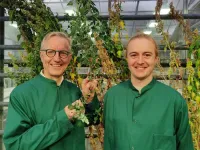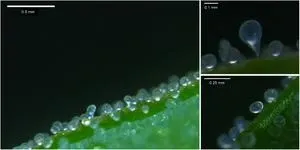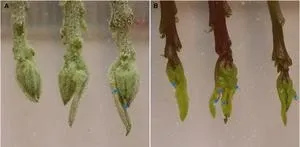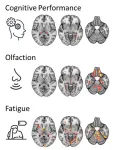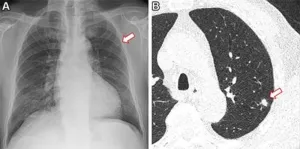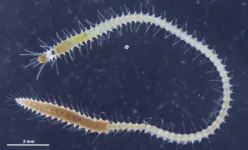Looking through a microscope, it resembles a water balloon. Or a piece of glass art. But it’s just a so-called bladder cell. If you wondered what it was for, you wouldn’t be the first. For 127 years, even the brightest minds in plant biology believed that the fluid-filled bladders covering the leaves, clustered flowers and stems of a range of hardy plants were something completely different from what they now turn out to be.
The discovery was made thanks to a new piece of research from the University of Copenhagen that completely contradicted the researchers’ expectations. The new insight can probably be used to expand the cultivation of a particularly nutritious and climate-resilient crop.
"Quinoa has been touted as a future-proof crop because it is rich in proteins and highly tolerant of drought and salt, and thus climate change. Scientists believed that the secret to quinoa's tolerance was in the many epidermal bladder cells on the surface of the plant. Until now, it was assumed that they served as a kind of salt dump and to store water. But they don’t, and we have strong evidence for it," says Professor Michael Palmgren from the Department of Plant and Environmental Sciences.
Bulwark against pests
Three years ago, a research group led by PhD student Max Moog and his supervisor Michael Palmgren began studying the epidermal bladder cells of quinoa plants in ways that had never been used before. The hope was to understand the plant’s mechanisms for making it resilient to salt and drought.
To this end, the researchers cultivated mutant plants without bladder cells to compare their reactions to salt and drought with those of wild quinoa plants covered with bladder cells.
To their surprise, the researchers discovered that bladder cells have no positive influence on the plant's ability to tolerate salt and drought. On the contrary, they seem to weaken tolerance. Instead, bladder cells serve as a barrier against pests and disease.
"Whether we poured salt water on the mutant plants without bladder cells or exposed them to drought, they performed brilliantly and against expectations. So, something was wrong. On the other hand, we could see that they were heavily infested with small insects – unlike the plants covered with bladder cells. That's when I realized that bladder cells must have a completely different function," says Max Moog, now a postdoc at the Department of Plant and Environmental Sciences and first author of the study, which has been published in the journal Current Biology.
When the researchers analyzed what is hidden inside the bladder cells, they did not find salt as expected – despite having added added extra salt to the plant. Instead, they found compounds that repel intruders.
"We discovered that bladder cells act as both a physical and chemical barrier against hungry pests. When tiny insects and mites trudge around on a plant covered with bladder cells, they are simply unable to get to the juicy green shoots that they’re most interested in. And as soon as they try to gnaw their way through the bladder cells, they find that the contents are toxic to them," says Michael Palmgren.
Among other things, the epidermal bladder cells of quinoa contain oxalic acid, a compound also found in rhubarb, which acts as a deadly poison on pests.
The experiments also demonstrated that the bladder cells even protect quinoa against one of the most common bacterial diseases in plants, Pseudomonas syringae. This probably happens because the bladder cells partially cover the stomata on the plant’s leaves, a point of entry for many bacterial invaders.
"Our hypothesis is that these bladder cells also protect against other plant diseases like downy mildew, a fungal disease which severely limits quinoa yields," says Max Moog.
The key to extra tolerant 'super-quinoa'
There are thousands of varieties of the South American crop, and the density of bladder cells on the plant's surface varies from variety to variety. But there is much to suggest that density determines how effective a safeguard the bladder cells are.
"Quinoa varieties with a higher density of bladder cells are most likely more robust against pests and diseases. On the other hand, they may be slightly less tolerant of salt and drought. And vice versa. These variations don’t change the fact that quinoa is generally very resistant to salt and drought. But the explanation must be found somewhere other than in the bladder cells," says Max Moog, continuing:
"Due to efforts to expand quinoa cultivation around the world, the new knowledge can be used to adapt the crop to various regional conditions. For example, southern Europe has very dry conditions, while pests are a bigger problem than drought in northern Europe. Here in northern Europe, it would make sense to focus on quinoa varieties that are densely covered with bladder cells."
According to Michael Palmgren, the new results provide a concrete recipe for how to breed "super-quinoa" relatively easily:
"Thus far, these bladder cells have been ignored in the breeding of quinoa. If you want a crop that is extra resistant to pests and diseases, but is still tolerant of salt and drought, one can opt to breed varieties that are densely covered with bladder cells. So, we may now have a tool that allows us to simply cross-breed our way to an extra tolerant 'super-quinoa'," says Michael Palmgren.
The research results add a new dimension to our knowledge about quinoa. Until now, very little was known about how the plant defends itself against attacks from hostile organisms.
"Now we know, quinoa isn’t just tolerant of non-biological stressors like drought and salt, but also of biological influences such as pests and pathogenic bacteria. And at the same time, we’ve found the secret of these odd-looking bladder cells. This research is an example of how what’s established doesn’t always turn out to be what’s true," concludes the professor.
[BOX:] WHAT IS A BLADDER CELL?
Epidermal bladder cells are fluid-filled hair structures on the leaves, stems and surfaces of a variety of plants. A few plants, including quinoa, are often completely covered with them.
Bladder cells are actually a form of trichomes. Trichomes are hairlike structures that most plants have. As a rule, trichomes look completely different and appear more like the hairs on the leaves of stinging nettles.
In 1896, Austrian plant physiologist Gottlieb Haberlandt proposed that bladder cells serve as water reservoirs.
The number of bladder cells on a plant is predetermined. A very young leaf has the same number of bladder cells as an old leaf, but the density on the young leaf is greater because of its smaller size. As such, young leaves, which are most attractive to pests, are better protected.
Bladder cells are found in members of the Amaranth family (e.g., quinoa and white goosefoot) and the Aizoaceae family (including ice plant), which combined, include approximately 3840 species worldwide.
[BOX:] ABOUT THE STUDY
Thousands of quinoa varieties exist, with researchers currently studying just over 100 of them.
Researchers combed a field of more than a million quinoa plants on the Danish island of Lolland to find a variant without epidermal bladder cells to use as a mutant plant in their experiments. The reactions in the mutant plant were compared with those in wild quinoa varieties.
The study has been published in the scientific journal Current Biology.
The researchers behind the study are Max Moog, Xiuyan Yang, Amalie K. Bendtsen, Christoph Crocoll and Michael Palmgren from the University of Copenhagen; Lin Dong and Merijn R. Kant from the University of Amsterdam, Netherlands; Tomohiro Imamura and Masashi Mori of Ishikawa Prefectural University, Japan and John C. Cushman of the University of Nevada, USA.
The research is funded by the Novo Nordisk Foundation and the University of Copenhagen and the European Union’s Horizon 2020 research and innovation programme under the Marie Skłodowska-Curie Fellowship Programme. END
